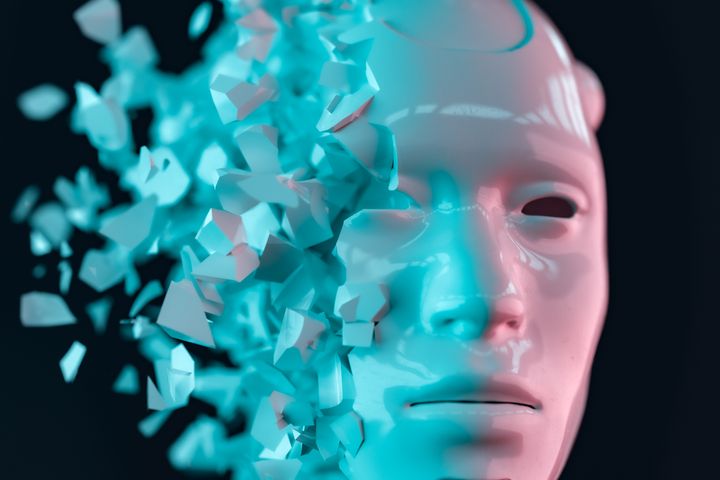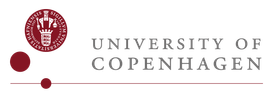New study pinpoints the weaknesses in AI
ChatGPT and other solutions built on Machine Learning are surging. But even the most successful algorithms have limitations. As the first in the world researchers from University of Copenhagen has proven mathematically that apart from simple problems it is not possible to create algorithms for AI that will always be stable. The study may lead to guidelines on how to better test algorithms and reminds us that machines do not have human intelligence after all.

Machines interpret medical scanning images more accurately than doctors, they translate foreign languages, and may soon be able to drive cars more safely than humans. However, even the best algorithms do have weaknesses. A research team at Department of Computer Science, University of Copenhagen, tries to reveal them.
Take an automated vehicle reading a road sign as an example. If someone has placed a sticker on the sign, this will not distract a human driver. But a machine may easily be put off because the sign is now different from the ones it was trained on.
“We would like algorithms to be stable in the sense, that if the input is changed slightly the output will remain almost the same. Real life involves all kinds of noise which humans are used to ignore, while machines can get confused,” says Professor Amir Yehudayoff, heading the group.
A language for discussing weaknesses
As the first in the world, the group together with researchers from other countries has proven mathematically that apart from simple problems it is not possible to create algorithms for Machine Learning that will always be stable. The scientific article describing the result was approved for publication at one of the leading international conferences on theoretical computer science, Foundations of Computer Science (FOCS).
“I would like to note that we have not worked directly on automated car applications. Still, this seems like a problem too complex for algorithms to always be stable,” says Amir Yehudayoff, adding that this does not necessarily imply major consequences in relation to development of automated cars:
“If the algorithm only errs under a few very rare circumstances this may well be acceptable. But if it does so under a large collection of circumstances, it is bad news.”
The scientific article cannot be applied by industry for identifying bugs in its algorithms. This wasn’t the intension, the professor explains:
“We are developing a language for discussing the weaknesses in Machine Learning algorithms. This may lead to development of guidelines that describe how algorithms should be tested. And in the long run this may again lead to development of better and more stable algorithms.”
From intuition to mathematics
A possible application could be for testing algorithms for protection of digital privacy.
”Some company might claim to have developed an absolutely secure solution for privacy protection. Firstly, our methodology might help to establish that the solution cannot be absolutely secure. Secondly, it will be able to pinpoint points of weakness,” says Amir Yehudayoff.
First and foremost, though, the scientific article contributes to theory. Especially the mathematical content is groundbreaking, he adds:
”We understand intuitively, that a stable algorithm should work almost as well as before when exposed to a small amount of input noise. Just like the road sign with a sticker on it. But as theoretical computer scientists we need a firm definition. We must be able to describe the problem in the language of mathematics. Exactly how much noise must the algorithm be able to withstand, and how close to the original output should the output be if we are to accept the algorithm to be stable? This is what we have suggested an answer to.”
Important to keep limitations in mind
The scientific article has received large interest from colleagues in the theoretical computer science world, but not from the tech industry. Not yet at least.
”You should always expect some delay between a new theoretical development and interest from people working in applications,” says Amir Yehudayoff while adding smilingly:
”And some theoretical developments will remain unnoticed forever.”
However, he does not see that happening in this case:
”Machine Learning continues to progress rapidly, and it is important to remember that even solutions which are very successful in the real world still do have limitations. The machines may sometimes seem to be able to think but after all they do not possess human intelligence. This is important to keep in mind.”
The scientific article ”Replicability and Stability in Learning”, was published at the Foundations of Computer Science (FOCS) conference 2023.
Kontakter
Amir Yehudayoff
Professor
Department of Computer Science (DIKU)
University of Copenhagen
amye@di.ku.dk
+45 93 89 53 88
Michael Skov Jensen
Journalist and team coordinator
The Faculty of Science
University of Copenhagen
Mobile: + 45 93 56 58 97
msj@science.ku.dk
Følg pressemeddelelser fra Københavns Universitet - Det Natur- og Biovidenskabelige Fakultet
Skriv dig op her, og modtag pressemeddelelser på e-mail. Indtast din e-mail, klik på abonner, og følg instruktionerne i den udsendte e-mail.
Flere pressemeddelelser fra Københavns Universitet - Det Natur- og Biovidenskabelige Fakultet
Old aerial photos give scientists a new tool to predict sea level rise3.7.2025 08:00:00 CEST | Press release
Researchers from the University of Copenhagen have gained unique insight into the mechanisms behind the collapse of Antarctic ice shelves, which are crucial for sea level rise in the Northern Hemisphere. The discovery of old aerial photos has provided an unparalleled dataset that can improve predictions of sea level rise and how we should prioritise coastal protection and other forms of climate adaptation.
Gamle luftfotos giver forskere nyt redskab til at forudsige havstigninger3.7.2025 08:00:00 CEST | Pressemeddelelse
Forskere fra Københavns Universitet har fået unik adgang til at forstå mekanismerne bag antarktiske ishylders kollaps, som er afgørende for havstigninger på den nordlige halvkugle. Et fund af gamle luftfotos har skabt et enestående datasæt, som kan forbedre vores forudsigelser af hvor meget havene stiger, og vores prioritering af kystsikring og andre klimatilpasninger.
Ny institutleder på IFRO: ”Faglighed og fællesskab går hånd i hånd”1.7.2025 10:49:17 CEST | Pressemeddelelse
Per Svejstrup er fra 1. august ansat som institutleder på Institut for Fødevare- og Ressourceøkonomi (IFRO). Den kommende leder træder ind i rollen med stor respekt for IFRO's faglige og kollegiale kultur med klare ambitioner for fremtiden.
Dangerous Variant of Salmonella Still Not Eradicated – Researchers Point to the Solutions1.7.2025 09:53:23 CEST | Press release
The infectious and multi-resistant cattle disease Salmonella Dublin can be fatal to both humans and animals and causes significant losses for farmers. Although Denmark has attempted to eradicate the disease since 2008, it has not yet succeeded. A study from the University of Copenhagen points to possible reasons – and the necessary solutions.
Farlig type salmonella er stadig ikke nedkæmpet i Danmark – forskere peger på løsningerne30.6.2025 09:54:03 CEST | Pressemeddelelse
Den smitsomme og multiresistente kvægsygdom Salmonella Dublin kan være dødelig for både mennesker og dyr og medfører desuden betydelige tab for landmændene. Selvom Danmark har forsøgt at udrydde sygdommen siden 2008, er det ikke lykkedes. Et studie fra Københavns Universitet peger på den mulige årsag og de nødvendige løsninger.
I vores nyhedsrum kan du læse alle vores pressemeddelelser, tilgå materiale i form af billeder og dokumenter samt finde vores kontaktoplysninger.
Besøg vores nyhedsrum